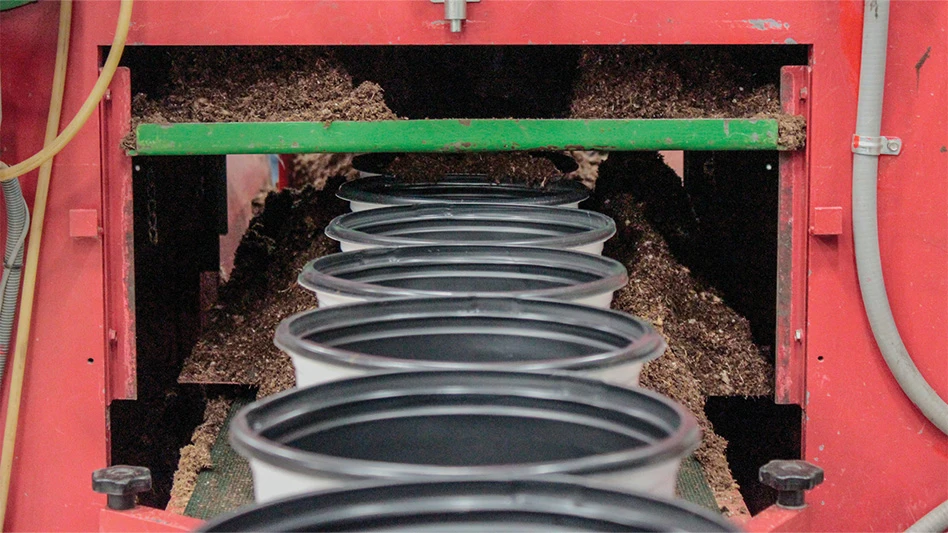

An integrated pest management program can be a good option for greenhouse operations. There are also several different ways growers can approach developing an IPM program, implementing it and ensuring it works effectively over time.
So how can greenhouse growers approach beneficial insects and a broader IPM strategy? To find out, Greenhouse Management consulted two experts — IPM Labs’ Carol Glenister and ARBICO Organics’ Arianna Weisbly Taylor — about the best beneficial insects, how beneficial insects can help growers cut costs and more.
Editor’s note: More insight from is available by searching "integrated pest management" at greenhousemag.com. Answers were edited for style and clarity.
Greenhouse Management: What are some of the options growers have for beneficial insects?
Carol Glenister: Actually, they are probably the predatory mites and beneficial nematodes (so not necessarily insects). The beneficial nematodes are sprayed by the million to control thrips and fungus gnats. The predatory mite cucumeris is applied weekly or biweekly for thrips control. There are a couple more species of predatory mites that are terrific in spider mite control.But to be fair, I need to defend some of the lesser-used beneficials because in some cases they only need to be applied once or twice and then they reproduce on their own in the greenhouse after that. For example, Stratiolaelaps is a predatory mite that colonizes the growing medium, be it potting mix or rockwool. Another predator that will propagate itself is dalotia, a tiny rove beetle that goes after fungus gnat larvae and thrips pupae in the growing media.
Arianna Weisbly Taylor: Greenhouse growers have a wealth of options for biological control of pests, including predatory insects, beneficial nematodes, predatory mites, parasitic wasps and microorganisms.
Depending on the infestation, growers can choose generalist (non-selective) predators or specialist (targeted) predators. Generalists include assassin bugs (Zelus renardii), green lacewings (Chrysoperla rufilabris) and minute pirate bugs (Orius insidious). Specialist predators include Phytoseiulus persimilis (a two-spotted spider mite predator), Aphidius colemani (an aphid wasp) and Eretmocerus eremicus (a whitefly predator).
GM: How can beneficial insects help growers improve their operations?
CG: There are so many advantages to using beneficials. It reduces growers’ pesticide load and exposure, and in many cases reduces the negative impact on leaf vigor after repeated sprays. There are decades old stories of cut rose quality advancing a whole grade when they weren’t being sprayed with pesticides weekly. Beneficials do not have to be released in overtime hours, and they do not require personal protective equipment.
AWS: There is great value in integrating multiple modes of pest control when growing in a greenhouse. Implementing a biological control program can impact production in many ways, monetarily and otherwise. Effective programs can reduce or eliminate the need for pesticide sprays. When eliminating sprays you foster a safer and more productive environment for staff, naturally occurring predators as well as introduced [pests].
By shifting to predators, you avoid the pest insects building a resistance to sprays and the efficacy of those sprays dropping. Efficiencies may be gained because labor isn’t restricted from the greenhouse (reentry intervals or pre-harvest intervals).
For many companies, improving its sustainability footprint is a priority. Biologicals can have little to no impact on the water, soil, natural predators or people in and around the environment. Using beneficial and predatory insects, mites and organisms can have a huge impact. Pest insects cannot build resistance or tolerance to predators like they can to chemicals (even organic ones).

GM: What is your advice for implementing beneficials in the greenhouse?
CG: Plan your entry into the biocontrol world just like you will plan your growing schedule and coordinate it with your crop. Biocontrols should start at the first sign of the pest, or even before. Contact a supplier to strategize a release schedule. They will want to know the crop, the area involved, and the pests that you anticipate.
Be sure to review your pesticides applied last year and find out which ones are incompatible with your new plans. Some pesticides are so harmful to beneficials that you have to wait three months after they were applied before you can start using beneficials in the spray area. Start to strategize how you may integrate new, compatible pesticides with your beneficials if necessary.
AWS: Get to know your pest or potential pests. Educating yourself and your staff about the signs and damages caused by insect pests allows you to make smart decisions about predators. Ask for recommendations and advice, or work alongside a biological control provider ... ahead of infestation. Incorporate predators into your current practice. Consider biological control as part of your whole growing plan from seed to harvest. A wide variety of predators and delivery options are available for any stage of growing. Monitor progress and keep records. Using available records and data from past seasons will help prepare for known pest pressures and when they can occur.
GM: What are some tips for properly training staff to use beneficial insects?
CG: Understanding biological control is practically second nature to people that are already scheduling and caring for plants. Be sure to take advantage of all of the biological control classes that are available.
One example is offered by Michigan State’s College of Knowledge a couple of times a year. Check out the course called “Biological Control for Greenhouse Growers.” The course is offered both in the winter and in summer and costs $129, but registration closes early. Scholarships are available for people short of funds.
Biological control sessions are also popular at grower conferences. Don’t miss them, because there are always new developments to learn about. Watch for Suzanne Wainright-Evans, a popular speaker at conferences all over the U.S. It is important to choose staff that are interested in these tiny insects and mites because it will make a huge difference if they watch for them and can see them in action.
Encourage all staff to report and mark areas where they detect pests and then watch and see what happens to those pests as a result of your different controls.
AWS: Greenhouse staff should be trained in identification and monitoring of pests and pest damage as well as placement of predatory insects. Create a culture of awareness so that staff are vigilant in spotting damage on the plants even if they don’t see the pests. This allows for selection and adjustments to be made throughout the growing season as changes take place.
Each insect, organism or mite life stage as well as the delivery method — bulk, cards, sachets — have different considerations for use. Timing is everything. Beneficial insects should be applied as soon as possible after delivery and staff should be aware of schedules.

GM: What tips do you have for purchasing beneficial insects?
CG: The easiest and surest way to purchase beneficials is to find a supplier that you can work with and have them help you set up a release schedule. That way, you will not be a week or two late on critical releases. Once you have a schedule in place, then monitor the pest levels and tweak the release schedule as needed.
AWS: Understanding your existing plan and inputs, thresholds and pest history allow a consultant to build a start to finish program.
Beneficial and predatory insects are not a one-and-done solution. Multiple applications and ongoing monitoring are keys to success. Scheduling and ordering insects on a continuity plan may allow for discounts over the entire season.
GM: Which beneficial insects can you store and how do you do it?
CG: The only beneficials that you can really store in the refrigerator are nematodes and lady beetles. These can both be stored in the refrigerator for many weeks. Plan to use them in the week that you get them. If you must hold for a day, 50° F is the best temperature.AWS: With few exceptions, ARBICO Organics does not recommend storing predators. Planning ahead not only assures availability, but also gives management the opportunity to schedule necessary labor for implementation.
Staff should be aware of the insect delivery to make any other spraying schedule adjustments ahead of time. Most predatory insects arrive ready to be applied to crops.

Explore the January 2021 Issue
Check out more from this issue and find your next story to read.
Latest from Greenhouse Management
- The HC Companies, Classic Home & Garden merge as Growscape
- Eason Horticultural Resources will now officially be known as EHR
- BioWorks receives EPA approval for new biological insecticide for thrips, aphids, whiteflies
- ScottsMiracle-Gro transfers cannabis subsidiary to focus on core lawn and garden business
- Ellen Mackenbach-Lakeman appointed new CEO of Dümmen Orange
- Southern Garden Tour sets 2025 dates for trial garden open houses
- Belgian thermal screen manufacturer Phormium launches Noctis Thermo
- New book explores plants that thrive in Rocky Mountains





